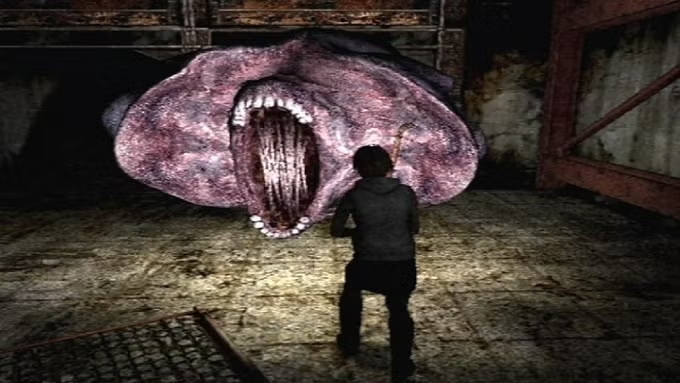
Silent Hill 3 follows Heather Mason, a seemingly ordinary teenager whose life is turned upside down when she is drawn into the nightmarish world of Silent Hill. Haunted by disturbing visions and pursued by a sinister cult, Heather must uncover the truth about her origins and her connection to the god the cult seeks to resurrect. As the line between reality and nightmare collapses, Heather is forced to confront both monstrous creatures and the trauma tied to her family’s past.
Released in 2003 for the PlayStation 2, Silent Hill 3 serves as a direct sequel to the first Silent Hill, continuing the story of Harry Mason’s adopted daughter. Unlike Silent Hill 2’s psychological ambiguity, this installment returned to the mythos of the town’s cult while still delivering deeply personal themes of grief, identity, and rebirth. The game is remembered for its striking atmosphere, disturbing monster design, and Akira Yamaoka’s haunting soundtrack, which elevated its chilling tone. Silent Hill 3 is widely regarded as one of the most ambitious and unsettling horror games of its generation.

















Silent Hill 3 was developed by Team Silent, the internal Konami studio responsible for the franchise’s early entries, and published by Konami. It was originally released for the PlayStation 2 in May 2003 in Japan, with international releases following soon after. A PC port launched later the same year, though it suffered from technical issues. More recently, the game has been re-released as part of the Silent Hill HD Collection on PlayStation 3 and Xbox 360 (2012), though this version received criticism for technical downgrades.
Gameplay
The game retained the classic survival horror mechanics established in earlier Silent Hill titles: exploration, puzzle-solving, and combat with limited resources. Heather navigates oppressive environments such as malls, subways, hospitals, and the cult’s church, all of which shift between reality and grotesque “Otherworld” versions. Combat includes firearms and melee weapons, with resource scarcity demanding careful management. Puzzle difficulty can be adjusted separately from combat, allowing for deeper engagement with the game’s cerebral challenges. The emphasis on claustrophobic environments, enemy unpredictability, and environmental storytelling reinforced the series’ legacy as a thinking person’s horror game.
Visuals and Style
Silent Hill 3 pushed the PlayStation 2 hardware to its limits, boasting some of the most detailed character models and environments of its era. The use of dynamic lighting, realistic fog, and oppressive sound design created an atmosphere both suffocating and immersive. Its art direction leaned heavily on body horror and psychological symbolism, with monsters designed to reflect Heather’s trauma and the cult’s perverse beliefs. The game’s visual style blended industrial decay with surreal, nightmarish imagery, cementing its place as one of the most disturbing entries in the series.
Importance in Survival Horror History
Silent Hill 3 is significant for being one of the last true Team Silent productions (Silent Hill 4 was the last) before the franchise shifted to Western developers. It built on the genre foundations of resource management, oppressive environments, and disturbing narrative, while also proving that survival horror could tackle deeply personal and emotional storytelling through its protagonist. Heather Mason’s role as one of the few strong female leads in the genre gave the game additional historical importance. Its psychological horror, symbolism, and grotesque imagery influenced countless later titles, and modern indie horrors like Layers of Fear.
Reception vs Historical Value
At launch, Silent Hill 3 was praised for its atmosphere, visuals, and music, though some critics noted its shorter length and more linear structure compared to Silent Hill 2. Despite these criticisms, fans embraced Heather’s story and the game’s continuation of the original’s cult plotline. Historically, Silent Hill 3 is now celebrated as one of the darkest, most artistically ambitious survival horror titles of the PlayStation 2 era. While Silent Hill 2 often overshadows it in critical discourse, Silent Hill 3 remains a cornerstone of the franchise and is still highly regarded by fans and scholars of horror games alike.
Availability and Collectibility



Original PlayStation 2 copies of Silent Hill 3 are highly collectible, specially complete-in-box (CIB) editions with the bonus soundtrack CD included in early runs. The 2003 PC version is less stable but sought after due to its rarity. The Silent Hill HD Collection on PlayStation 3 and Xbox 360 remains the easiest way to play on modern hardware, though its altered visuals and voice acting make it a controversial option. Original PS2 discs have steadily risen in value, and Silent Hill 3 is considered a prized possession among survival horror collectors.
Trailer:
